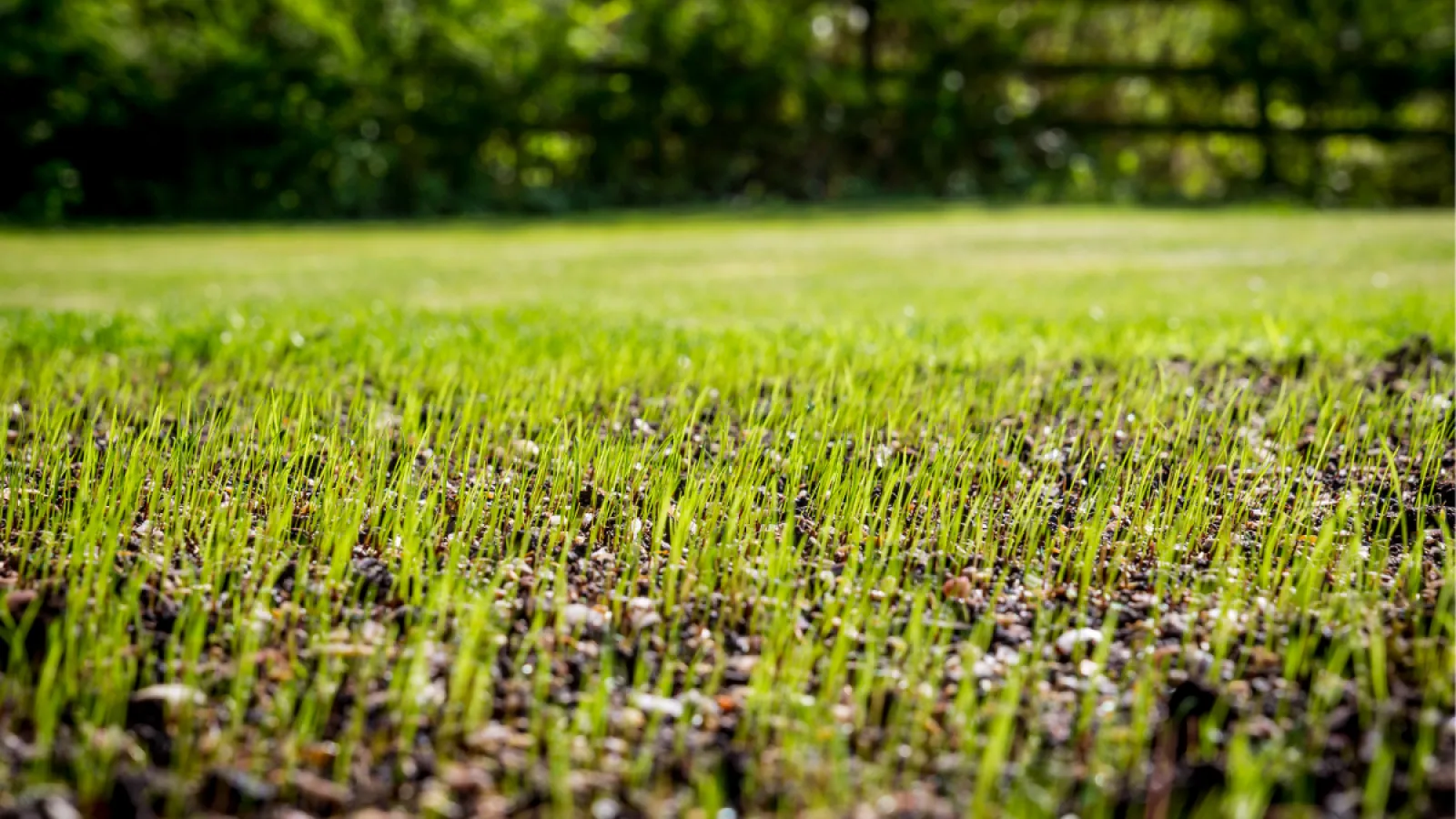
Fall Pre-emergent Weed Control
The Key to a Healthier Lawn Year-Round
When it comes to keeping a lawn lush and weed-free, timing is everything. One of the most important steps you can take to protect your Bermuda, Zoysia, or other warm-season turf is applying pre-emergent weed control in the fall. These treatments lay the foundation for a lawn that stays healthier and more resilient throughout the year.
How Pre-Emergent Weed Control Works
Pre-emergent herbicides don't kill existing weeds. They stop new ones before they can even sprout. Once applied, the product creates an invisible barrier in the soil that targets weeds as they begin to germinate. This barrier prevents root development, which means the weeds die before they ever have a chance to break the surface. As temperatures begin to drop in the fall, summer weeds finish seeding, perennials go dormant, and cool-season weeds start to wake up. Without pre-emergent protection, these weeds quickly take advantage of your lawn's open space and can establish themselves before you even notice them. By spring, your yard could already be overrun with weeds, making control much harder.
Why Fall Applications Are So Important
Applying a pre-emergent in the fall directly targets weeds that thrive in cooler weather. These weeds germinate in late fall, grow through the winter, and then drop seeds in spring, starting the cycle all over again. Breaking that cycle now makes a big difference later. Some of the most common weeds controlled with fall pre-emergents include:
- Chickweed
- Henbit Poa Annua (annual bluegrass)
- Winter grasses
- Thistle
- Dandelions
- Clover
By treating in the fall, you prevent these weeds from taking root. That means:
- Cleaner lawns in spring: Fewer weeds competing with your grass.
- Long-term control: Fewer weeds sprouting in summer and beyond thanks to reduced seed spread.
- Stronger turf: Grass has more room, nutrients, and sunlight to grow thick and healthy.
Think of it as a domino effect: one fall application helps stop weeds not just in winter, but throughout the next growing season.
When to Apply Pre-emergent Weed Control
The effectiveness of a pre-emergent depends on timing. It must be applied before weed seeds germinate. Once those seeds begin to sprout, the window for prevention is gone, and your only option is post-emergent treatments. For most areas in the Southeast, September through November is the ideal window for fall pre-emergent treatments. In most cases, pre-emergent applications should be made as soil temperatures begin to cool but before winter weeds have fully germinated. Waiting too long can mean missing the opportunity to stop invasive growth before it starts.
Turf Masters' Proactive Approach
At Turf Masters Lawn Care, we know that prevention is the best weed control strategy. That's why our comprehensive lawn care program includes fall pre-emergent treatments during rounds 6 and 7. Our technicians apply both pre-emergent and post-emergent herbicides, along with potassium, to strengthen warm-season lawns like Bermuda, Zoysia, and St. Augustine. This combination not only stops weeds but also helps your lawn prepare for winter stress so it can green up healthier in spring.
Take Control of Next Year's Lawn Today
Weed prevention doesn't happen overnight. It starts months in advance with careful, timely treatments. By investing in a fall pre-emergent application, you set your lawn up for success, with fewer weeds, healthier turf, and better growth all year long. Contact the experts at Turf Masters Lawn Care today to get a quote for your fall lawn care service and enjoy a lawn that stays cleaner and greener season after season.


